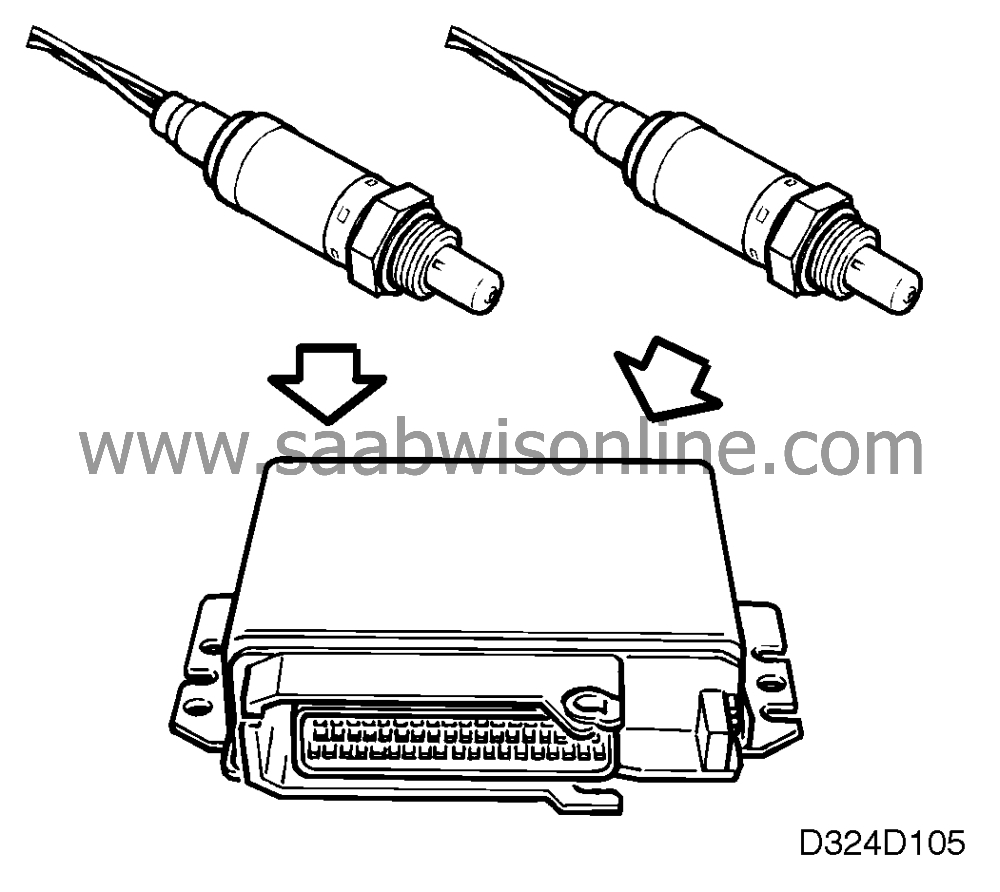Lambda control
| Lambda control |

| Oxygen sensors 1 and 2 |
The B258 engine is fitted with two oxygen sensors, one for the front row of cylinders (2-4-6) and one for the rear row of cylinders (1-3-5).
The oxygen sensors are mounted in the respective exhaust pipe just behind the exhaust manifold. Their purpose is to provide the control module with information on the composition (oxygen content) of the exhaust gas.
Information on the oxygen content of the exhaust gas is sent by oxygen sensor 1 (1-3-5) to pin 28 of the control module and by oxygen sensor 2 (2-4-6) to pin 47 of the control module.
The control module processes this information instantly, as it is one of the most important factors for determining the amount of fuel.
The signals from the two oxygen sensors are processed individually, which means that the control module can decide on different amounts of fuel in each cylinder.
The sensor consists of a primary cell and a solid ceramic electrolyte. The inside of the ceramic element is in direct contact with the surrounding air while the outside is in contact with the exhaust gases.
When the oxygen content of the exhaust gases rises, the pressure on the ceramic element increases and it produces an electric current.
If the engine runs on a rich mixture, i.e. with a low oxygen content, the oxygen sensor produces a signal of up to about 1 V. In the case of a lean mixture, the signal voltage will be extremely low or equal to zero (0 V).
To operate efficiently the sensor must be hot. To attain working temperature as quickly as possible it is fitted with a heating element which receives current from the fuel pump relay and is grounded at grounding point G7P.
When measured with a voltmeter, the signal voltage will normally vary between 0.1 and 0.9 V.
In the event of a break in the sensor circuit, the control module will set the voltage at 0.45 V, which corresponds to lambda = 1.



